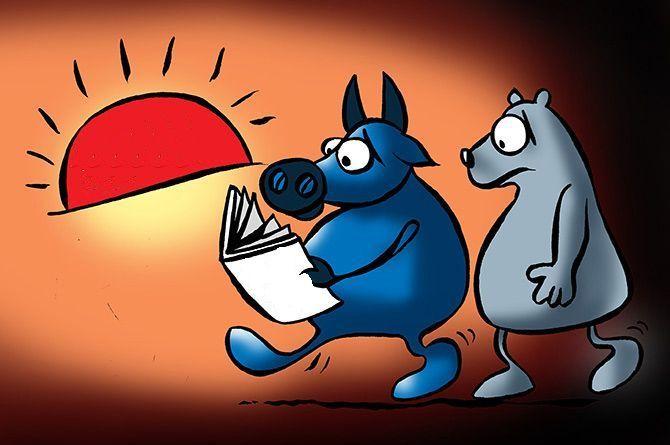It has mostly been a one-way street for markets that have moved up sharply since July.
The front-line indices – the S&P BSE Sensex and the Nifty50 – have gained 6.7 per cent and 7.3 per cent, respectively, in the past three months.
The rally in mid- and small-caps has been sharper, with both indices surging 14 per cent and 9 per cent, respectively, during this period.
This sharp run has made analysts at Jefferies cautious.
They suggest the current uptrend in equities may not last long.
The information technology sector (IT), believes Jefferies, remains at significant risk of sell-off if the Nifty was to correct.
As a tactical strategy, they have moved some of their allocation from the IT sector to staples, expecting the latter to be a defensive bet in the event of a market correction.
Also, they have replaced Godrej Properties (more volatile) with Macrotech Developers in their model portfolio.
Here are some key reasons why they have turned cautious on the current rally:
Bond yield, earnings yield gap: Expensive valuations, wrote Mahesh Nandurkar, managing director at Jefferies, in a report co-authored with Abhinav Sinha, is not a new phenomenon in Indian markets.
However, bond yields and the earnings yield gap exceeding 2 percentage points are making them uncomfortable, particularly when bond yields could move higher, putting further pressure on markets.
“Also, in the past year, the Nifty has corrected by over 10 per cent thrice from a similar yield gap when the index was around the 18,000 mark.
“We see a strong chance of a repeat, given the clues from the US Federal Reserve (Fed),” read the note from Jefferies.
Global rates on the rise, again: The US 10-year treasury rates are up around 70 basis points month-on-month to 3.25 per cent, with the US dollar index appreciating nearly 4 per cent.
Consequent to this, the US markets have moved within 7 per cent of their year-to-date lows.
Jefferies believes the Fed has much more tightening ahead than priced in since the low unemployment rates are causing inflation to run much higher than the 2-per cent target.
“The US unemployment rate needs to double from the current 3 per cent, so as to achieve the inflation target, which implies more/continued rate hikes, and we assume the first quarter of calendar year 2023 exit rate of 4 per cent,” wrote Nandurkar and Sinha.
India’s foreign exchange (Fx) position needs monitoring: India’s trade deficit has trended at record levels recently and the current account deficit is on track to hit a decadal high of 3.5 per cent in 2022-23, which Jefferies believes needs close monitoring.
“The Fx reserves (including forward cover) are down around $100 billion now, from peak, and import cover has fallen below nine-month levels.
“The gross domestic product deflator has hit a decadal high, implying broad-based inflationary pressures,” said the report.
Déjà vu? What happened in the past three corrections: From its October 2021 peak, the Nifty has had three declines of over 10 per cent, with a total decline of 17 per cent to the June bottom.
Among the larger sectors, automotive, industrial, and fast-moving consumer goods have outperformed, while IT, health care, and materials have underperformed.
“Broadly, banks have been market performers.
“Any potential market correction will likely emanate out of a hawkish stance by the Fed and likely stagflation worries. That could hit the IT sector,” cautions Jefferies.
Source: Read Full Article
-
Russian Forces Committed War Crimes In Ukraine, Human Rights Watch Says
-
Tyson Should Fire CFO Tyson
-
DGCA suspends Air India’s Boeing simulator facility in Mumbai for lapses
-
Exhibition about the triumphs and struggles of African Caribbean lives
-
Netflix Shuttering Its Original DVD-By-Mail Business In End Of Era


